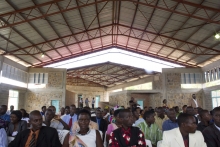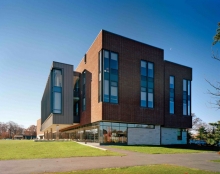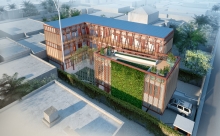MulvannyG2 Architecture Designs Self-Sustaining Gashora Girls Academy in Rwanda
A conversation between two Seattle women sparked action that is now changing the lives of hundreds of young women, as well as a country. Suzanne McGill and Shal Foster founded the Rwanda Girls Inititative and, in partnership with MulvannyG2 Architecture, built a school that is now in its second year of operation and is providing a replicable model for future educational development.
During a marathon training run in 2008, two longtime friends and moms from Seattle began talking about the high-quality educational opportunities available to their children simply because they were born in the United States. The conversation eventually led to a discussion about Africa, a continent where only 13% of young women achieve secondary education due to poverty, lack of opportunity, and obstacles such as household chores and safety concerns. Suzanne McGill and Shal Foster began to wonder: What can we do to make a difference and help to provide educational opportunities for these young African women?











